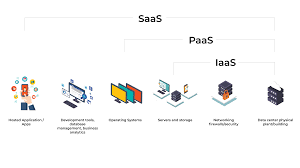
What is SaaS? A Comprehensive Overview
Introduction
In the ever-evolving world of technology, Software-as-a-Service (SaaS) has emerged as a dominant force, changing the way businesses and individuals access and utilize software applications. SaaS is a cloud computing model that offers numerous advantages in terms of convenience, cost-effectiveness, and scalability. In this article, we’ll explore SaaS in-depth, addressing some of the most frequently asked questions to help you gain a comprehensive understanding of this innovative approach to software ddelivery.
- What is SaaS?
SaaS stands for Software-as-a-Service, a cloud-based service where software applications are hosted and made available to users over the internet. Instead of installing software on individual devices or servers, users can access the software through a web browser, making it a highly accessible and flexible ssolution.
- How Does SaaS Work?
SaaS applications are hosted on cloud servers, and users can access them with an internet connection and a web browser. This eliminates the need for users to install and maintain software locally, reducing the burden of software management.
- What Are the Advantages of SaaS?
SaaS offers several key advantages, including:
- Cost Savings
SaaS eliminates the need for expensive upfront software purchases and ongoing maintenance. Users typically pay a subscription fee, reducing the total cost of oownership.
- Accessibility
SaaS applications can be accessed from anywhere with an internet connection, enabling remote work and ccollaboration.
- Automatic Updates
SaaS providers handle software updates and maintenance, ensuring users always have access to the latest features and security eenhancements.
- Scalability
SaaS solutions can easily scale to accommodate the changing needs of businesses, from startups to large eenterprises.
- Security
SaaS providers often invest heavily in security, offering robust protection for your data and aapplications.
- What Are Some Popular SaaS Applications?
SaaS has a broad spectrum of applications, from business tools to personal productivity software. Some popular examples include:
- Microsoft 365
Offering a suite of productivity tools, including Word, Excel, and PowerPoint.
- Salesforce
A customer relationship management (CRM) platform.
- Dropbox
A file storage and collaboration tool.
- Zoom
A video conferencing and communication platform.
- Can SaaS Be Customized?
SaaS applications are often customizable to a certain extent. Users can typically configure settings and options to align the software with their specific needs. However, the level of customization may vary between different SaaS providers and applications.
- What Are the Differences Between SaaS, PaaS, and IaaS?
SaaS is just one component of cloud computing. There are three primary service models in cloud computing:
- SaaS (Software-as-a-Service)
- PaaS (Platform-as-a-Service)
- IaaS (Infrastructure-as-a-Service)
SaaS delivers software applications, PaaS provides a platform for developing and deploying applications, and IaaS offers virtualized computing resources like servers and storage.
- Is SaaS Suitable for Small Businesses?
SaaS is an excellent choice for small businesses. It offers cost-effective solutions with the flexibility to scale as the business grows. Small businesses can access powerful software tools without the need for a large IT infrastructure.
- Are There Any Disadvantages to SaaS?
While SaaS has many advantages, it’s not without its drawbacks. Some potential disadvantages include:
- Dependency on internet connectivity
- Limited customization compared to on-premises solutions
- Data security concerns, although many providers have robust security measures in place
Conclusion
Software-as-a-Service (SaaS) is a game-changer in the world of software delivery, offering cost-effective, accessible, and scalable solutions for businesses and individuals. It simplifies software management, ensures automatic updates, and provides a wide range of applications for various needs. While SaaS is not without its challenges, its numerous advantages make it a compelling choice for modern businesses and users.

